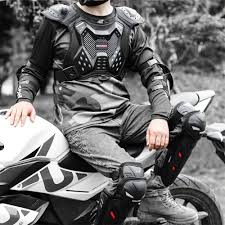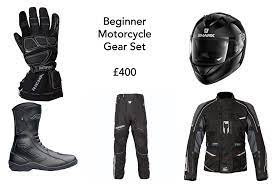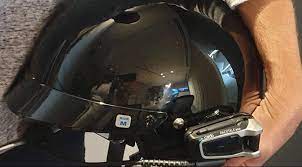Stylish Safety: Embracing Casual Protective Motorcycle Clothing

Casual Protective Motorcycle Clothing: Style and Safety Combined
Riding a motorcycle is not just a mode of transportation; it’s a lifestyle. For many riders, their motorcycle gear is an essential part of their identity, reflecting their personality and passion for the open road. While safety should always be a top priority when riding, it doesn’t mean sacrificing style. That’s where casual protective motorcycle clothing comes in.
Casual protective motorcycle clothing offers riders the best of both worlds – fashionable attire that also provides essential protection on the road. From stylish leather jackets to reinforced denim jeans, these garments are designed to keep riders safe without compromising on style.
One of the key features of casual protective motorcycle clothing is the incorporation of protective elements such as armor inserts and abrasion-resistant materials. These features are discreetly integrated into the garments, ensuring that riders can enjoy both comfort and safety while out on the road.
Leather jackets have long been a staple in motorcycle fashion, not only for their timeless style but also for their durability and protection. Modern leather jackets designed for motorcycling often come equipped with CE-approved armor at key impact zones, providing riders with added peace of mind.
For those who prefer a more casual look, armored hoodies and Kevlar-lined shirts offer a comfortable yet protective option. These garments blend seamlessly into everyday wear, allowing riders to transition effortlessly from the road to social settings without compromising on safety.
When it comes to lower body protection, reinforced denim jeans are a popular choice among riders seeking both style and safety. These jeans feature Kevlar or Dyneema panels at high-impact areas such as the hips and knees, providing abrasion resistance in case of a fall.
Ultimately, casual protective motorcycle clothing is about empowering riders to express themselves through their attire while ensuring they stay safe on every ride. By combining style with essential protection, these garments offer riders the confidence to embrace their passion for motorcycling without compromising on safety.
Essential Tips for Choosing Casual Protective Motorcycle Clothing
- Wear a well-fitting helmet to protect your head in case of accidents.
- Choose a sturdy pair of gloves to safeguard your hands from injuries and weather conditions.
- Opt for abrasion-resistant jackets and trousers to protect your skin in case of falls.
- Wear high-visibility clothing to increase your visibility on the road, especially during low-light conditions.
- Invest in durable motorcycle boots to protect your feet and ankles while riding.
- Consider wearing body armour underneath your clothing for added protection in critical areas like the back, shoulders, elbows, and knees.
- Regularly inspect and maintain your protective gear to ensure it remains effective and safe to use.
Wear a well-fitting helmet to protect your head in case of accidents.
Wearing a well-fitting helmet is crucial when it comes to casual protective motorcycle clothing. Your head is one of the most vulnerable parts of your body in case of an accident, making a helmet a non-negotiable safety essential. A properly fitting helmet not only provides protection but also ensures comfort and visibility while riding. Investing in a high-quality helmet that fits correctly can make all the difference in keeping you safe on the road.
Choose a sturdy pair of gloves to safeguard your hands from injuries and weather conditions.
When selecting casual protective motorcycle clothing, it is crucial to choose a sturdy pair of gloves to safeguard your hands from injuries and weather conditions. Motorcycle gloves not only provide protection in the event of a fall but also shield your hands from wind, rain, and debris while riding. Opting for gloves with reinforced palms and knuckle protection can significantly reduce the risk of hand injuries in case of an accident, ensuring both safety and comfort on the road.
Opt for abrasion-resistant jackets and trousers to protect your skin in case of falls.
When selecting casual protective motorcycle clothing, it is crucial to opt for abrasion-resistant jackets and trousers to safeguard your skin in the event of falls. These garments are designed with materials that can withstand abrasions and provide a protective barrier between your skin and the road surface. By choosing abrasion-resistant jackets and trousers, riders can significantly reduce the risk of serious injuries during accidents, ensuring both style and safety on their journeys.
Wear high-visibility clothing to increase your visibility on the road, especially during low-light conditions.
When it comes to casual protective motorcycle clothing, one important tip is to wear high-visibility garments to enhance your visibility on the road, particularly in low-light conditions. Opting for clothing with reflective elements or bright colours can significantly increase your presence to other road users, reducing the risk of accidents and enhancing overall safety during rides. By prioritising high-visibility clothing as part of your riding gear, you not only elevate your own safety but also contribute to creating a safer environment for everyone on the road.
Invest in durable motorcycle boots to protect your feet and ankles while riding.
Investing in durable motorcycle boots is essential for protecting your feet and ankles while riding. Quality motorcycle boots provide crucial support and protection, helping to prevent injuries in case of accidents or falls. With reinforced materials and sturdy construction, these boots offer both style and safety, ensuring that riders can enjoy their journey with peace of mind. Prioritising the safety of your lower extremities with durable motorcycle boots is a wise choice for any rider looking to enhance their riding experience while staying protected on the road.
Consider wearing body armour underneath your clothing for added protection in critical areas like the back, shoulders, elbows, and knees.
When it comes to enhancing your safety while riding, one valuable tip to consider is wearing body armour underneath your clothing. By strategically placing armour in critical areas such as the back, shoulders, elbows, and knees, you can significantly increase your protection in the event of a fall or accident. This added layer of defence ensures that you can enjoy your ride with peace of mind, knowing that you have taken proactive steps to safeguard yourself against potential risks on the road.
Regularly inspect and maintain your protective gear to ensure it remains effective and safe to use.
Regularly inspecting and maintaining your casual protective motorcycle clothing is crucial to ensure that it remains effective and safe for use on the road. By conducting routine checks on your gear, such as inspecting for wear and tear, loose seams, or damaged armor inserts, you can identify any potential issues early on and address them promptly. Proper maintenance, such as cleaning and storing your gear correctly, also helps prolong its lifespan and performance, ensuring that it continues to provide the necessary protection when you need it most. Remember, taking care of your protective gear is not just about style – it’s about prioritising your safety on every ride.







